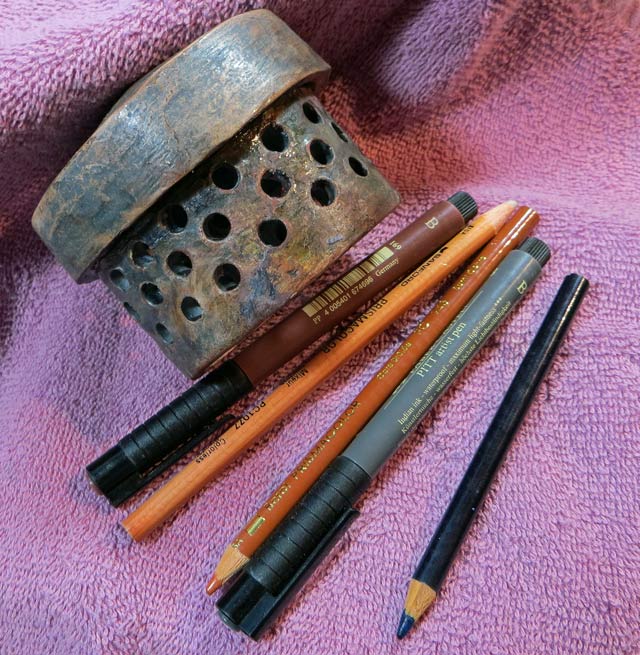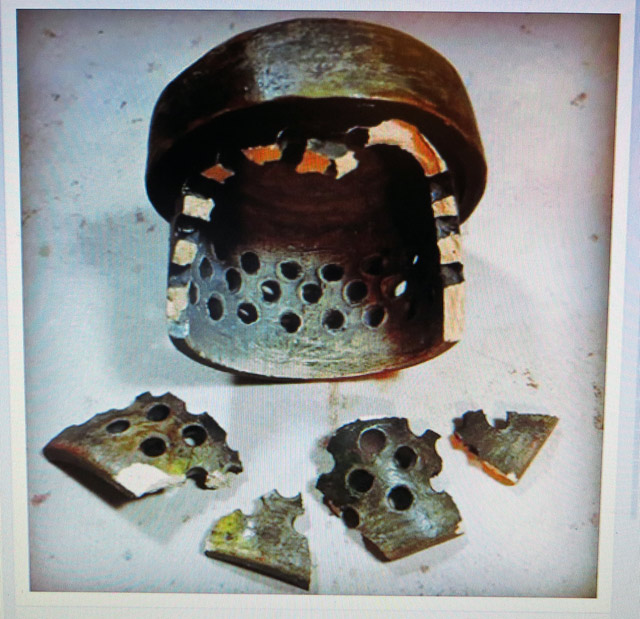
The Summer Studio Journal Re-Runs just keep on comin’! This post from August 22, 2012 is essentially a reply to an email query, as you shall see. I have added a few more resources that I have learned of in the past five years, but other than that, it’s a great guide, so here it is:
I don’t get a lot of emails from complete strangers, but after a few years of an active festival, gallery and online presence, I’m starting to.
Most writers want to share a specific resource, ask an art business question, or even commission me to make something special. I take these conversations as they come and generally enjoy the new connections.
This one, however, was from a person new to ceramics in a country on the other side of the blue Pacific. The subject line read “admire your work.”
She explained she was seeking ways to decorate her ceramic sculptures without further firings. She knew it was called a Cold Finish, but besides paints, she was finding precious little information about it. She had miraculously stumbled across my work and was wondering how I got my pieces to look like they did. Was any cold finishing involved?
I sat down to respond to her with a few ideas and out popped the following email, which does an incredibly better job of listing Everything I Know About Cold Finishes than I ever would have written without the compelling urge to help another beginning ceramics enthusiast. It’s one more reason I enjoy ceramics: we are a community of sharers.
In that spirit, I thought to reproduce the email exactly as I wrote it the other day, with only some added bolding as enhancement. Here it is:
Hello Catherine and thanks for your lovely words!
Most of my finishes are fired to cone 6 oxidation (electric kiln) but I have a few cold finish techniques I can share with you.
Sometimes my firing results are close but not quite what I want or I want some added bling. At those times I have found the following list of products to be useful:
Sumi Ink and India Ink, brushed into the lines and recesses of a piece and sponged off. Nice!
Golden Acrylic paints, in thin washes. I especially use Micaceous Iron Oxide which not only has fun tiny mica flecks, but I’ve learned (by accident!) that it will last through a firing….so sometimes I fire it on too.
Oil paints and watercolors are nice too, but I tend to reach for them less.
Prismacolor colored pencils: a waxy drier finish which is lightfast and can be layered for subtlety. They won’t slick to glassy glazes and do better over very dry surfaces.
(Which reminds me: most of these products are lightfast and archival, but probably not for outdoors.)
Faber Castell makes a line of PITT artist pens which have tiny ink-based pen tips, and large or small brush tips that I use more for changing the tone of an area or linear emphasis. Very nice!
Amaco makes a range of colored metallic waxes called Rub ‘n Buff which are useful for a bit of gold, silver or even blues, reds and purples, on highlights. Can help with a worn antique look.
And lastly are two brands that market adhesives and thin gold leaf variations : Old World Art and Magic Leaf. This is if you want a bit of true shiny non-tarnishing gold!
For a matte sealer, which is to me is better than a shiny clear coat: Delta Ceramcoat Satin Exterior/Interior Varnish.
That’s my brain dump. If I think of something else, I’ll send it along. I don’t know if these products can be had locally for you, but online is sure to get you most of them.
I wish you all the best,
Liz
P.S. Most books don’t cover “post-firing” finishes, but I found an excellent discussion in Robin Hopper’s book Making Marks. He also discusses sandblasting, acid etching and cutting elsewhere in that book. There, you have all I know!
 And there, you Dear Readers now have it! I would add today that these types of cold finishes are more suited to sculptural work. If you put them on pieces used for food, even on the exterior to avoid possible leaching and toxicity, they will still suffer from the washing.
And there, you Dear Readers now have it! I would add today that these types of cold finishes are more suited to sculptural work. If you put them on pieces used for food, even on the exterior to avoid possible leaching and toxicity, they will still suffer from the washing.
Since 2012, I have also discovered an outdoor sealer that doesn’t change the look of unglazed ceramic sculpture or grout: Glaze ‘n’ Seal Waterbase Stone Sealant “Natural Look” Impregnator.
And, lastly, while they involve another very low temp firing so are technically not Cold Finishes, playing with lusters, china paints and decals is pretty fun and adds a whole other dimension to things.
